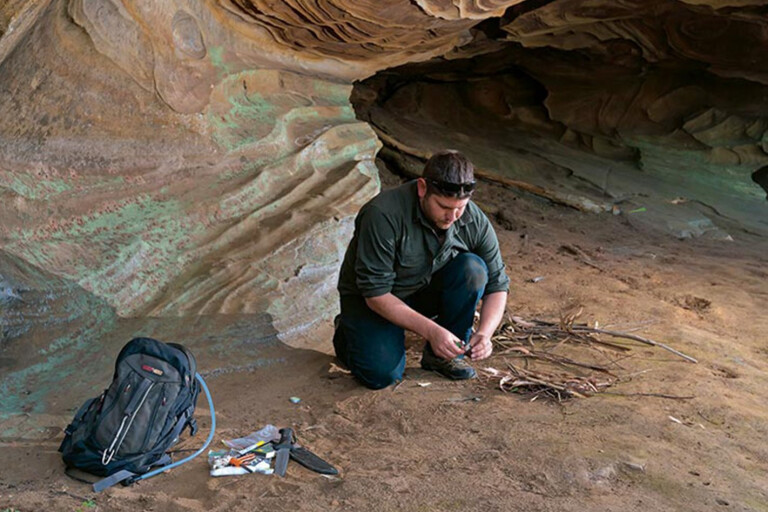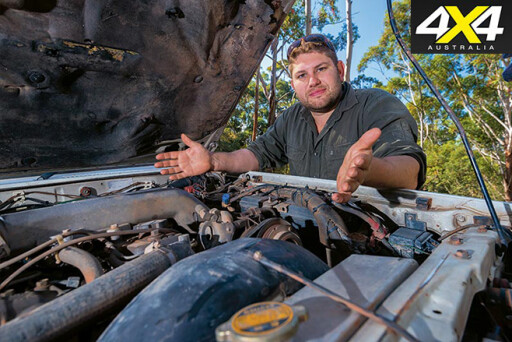
The Australian bush is an awesome place for campers and 4WDers, but anybody who thinks it doesn’t come with risks is dead-set kidding themselves. Yep, as beautiful as this country is, it certainly has a reputation for being brutally unforgiving.
There’s always the chance of something going wrong, and sometimes things just can’t be avoided. I know what you’re thinking: ‘Yeah, but that’s why I’ve got my whole camping set-up’ – right?
Let’s have a think about the different scenarios that could arise. Imagine your 4WD broke down or you had a car accident in the middle of nowhere. What would you do? Or maybe you went for a hike and got lost with no supplies whatsoever – then you’re really up the creek without a paddle. Who knows what will happen? That’s where it’s important to have a bit of extra knowledge to help keep you alive if the worst should happen. So let’s take a look at the basics.
 FIRST THINGS FIRST
FIRST THINGS FIRST
So, you’ve landed yourself in a sticky situation – what’s the next step? Well, it’s important to remain calm in any scenario so you can assess the situation for what it is. Your location and the challenges you’re faced with will vary from one instance to the next, so it’s important to prioritise your needs right from the get-go. For example, if you’re in the searing heat of the desert, finding water is a much bigger problem than if you’re in the snow. One simple way to help guide you in the right direction is the rule of three.
This states you can stay alive for three minutes without oxygen, three hours without shelter in extreme conditions, three days without water and three weeks without food. So, if you’re stuck in the extreme desert heat during the day and battling freezing temperatures at night, protection from the elements and warmth for the night would be your first priorities. Then you would concentrate on finding water, and finally food. We’ll assume oxygen’s not a problem.
 USING WHAT YOU’VE GOT
USING WHAT YOU’VE GOT
Working out exactly what you have access to can really help you out early on in the piece. If you’re lucky enough to still have access to your vehicle, there’s plenty of gear that can come in handy. For example, your car can provide shelter and protection. You could use the battery and a set of jumper leads to get a fire going; there’s even fuel to help you out.
Your lights are perfect for attracting help, there’s a million different materials available to fashion a makeshift anything, and rescue teams will spot a vehicle a heck of a lot faster than a person on their own – so make sure you stick with your vehicle at all times.
But if you’ve got nothing more than the shirt on your back, it can come in handy in more ways than one. For example, it can be used as a strainer to filter water, used to tie or secure things, or turned into a sack to carry food and gear.
 BUILDING A SIGNAL FIRE
BUILDING A SIGNAL FIRE
Things look different from the air, and smoke is one of those things that’s easily spotted from up above. This makes a signal fire an effective way to broadcast your location.
The traditional signal fire is simple – start by forming three large main branches into a tripod in a clearing. Build a platform to sit the fire on roughly a quarter of the way up, filling it with things like dried leaves to help light it up quickly. Also, add a few dry branches on top to keep it going.
When rescue services are hovering around the area, place plenty of green branches over the top of the tripod so it produces plenty of smoke and light it up! It’s best to have it next to your campfire ready to go in an instant. If possible, build three fires positioned in a triangle to form the international distress signal.

COMMENTS